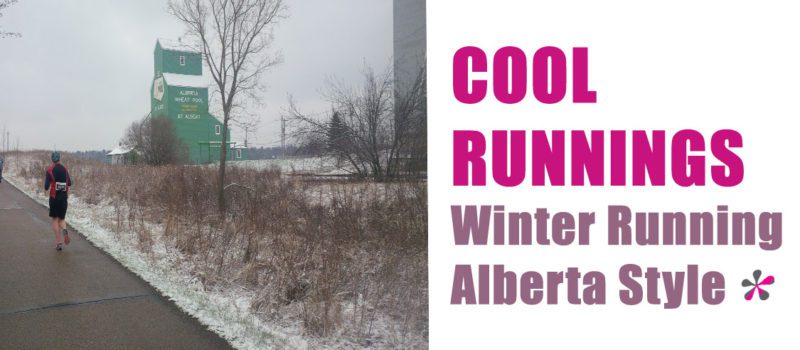
Winter Running in Alberta
Building a Base for the Spring By Dan Timmermans
Its winter here in Edmonton: dark, cold and snowy. Most people living here through the winter months will acclimatize, although not without a few grumblings, to temperatures as cold as minus 35 degrees (like last January 2020), and short daylight hours (7 hours and 27 minutes Dec 20, 2020). But the natural beauty of Edmonton, St. Albert, Sherwood Park and the rest of Alberta can be appreciated in the Spring and Summer seasons with now virtual running races and events, typically beginning early in the Spring (for a fun 5/10/Half Marathon, you should check out www.Runwild.ca). For the best success in these races or for staying healthy in general, training throughout the winter is ideal, at least to maintain a base of fitness prior to heavier training into the spring. One can opt for indoor track or treadmill running (especially on the coldest of days), but for me personally, I yearn for the fresh air and satisfaction of outdoor routes.
If you are choosing to run outside from November to March here is some helpful hints to keep yourself strong and safe:
Gear
Having appropriate winter running gear is essential to enjoying your run and avoiding frostbite. Good winter gear includes waterproof gaiters or shoes with waterproofed uppers, anti-slip ice spikes/grippers for over your runners, base and outer layers that vent as needed, hats, balaclava/face shields, gloves, and Vaseline/wind guard for your cheeks. You will also need a good light if you are running in darker conditions after work. Headlamps, belly lights and flashlights can help you see and be seen. For a comprehensive shop for all running gear, check out your locally owned run shop (I prefer Fast Trax in Edmonton: https://www.ftrs.ca/).
Technique
With slippery conditions, outdoor winter runners should take shorter strides, landing with a flatter foot-strike to avoid slipping (keep feet under your hips on landing. This may result in getting tired more quickly, and using other muscles (hip flexors/adductors, ankle stabilizers) than with dry-condition running.
Pacing
Worry less about actual interval pace, and more about duration of activity and Rating of Perceived Exertion (effort). If extreme cold conditions, 2 shorter runs (of 3-4 km) may be safer than one longer 7 km route.
Warm ups
Take an extra 10 minutes indoors (climb stairs, jumping jacks, fast squats) to warm up the larger leg muscles prior to running outside. It is a good idea to perform this inside your home before heading out. Starting with an elevated heart rate and light sweat will combat the negative temperature outside.
Route selection
It may be prudent to alter the route/direction of your run to battle the wind: choose to run into the wind at first, with the wind at your back on the way home. Or you can break it up into intervals so you are not exposing your face to the wind for prolonged periods of time. You should also consider the surface. After snow falls on icy trails, there is an increased risk of slipping on covered surfaces. Depending on the day you might consider sticking to sidewalks instead of trails.
After run care
Get out of your wet clothes and into something warm and dry quickly after your run. Doing some gentle static stretches (Holding each for 2×20 seconds per side) as part of your cooldown routine can help assist in injury prevention. We always recommend dynamic warm up and slow sustained cool downs. Here are some static stretching suggestions to improve your post run cool down:
Quadriceps
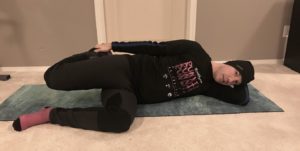
Hamstrings
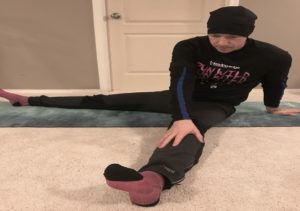
Glutes (gluteus medius and piriformis)
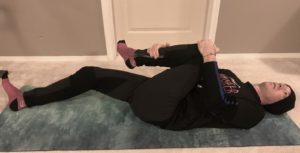
Hip flexors (Iliopsoas and Rectus Femoris)
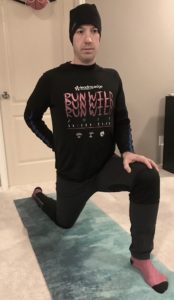
Calf muscle groups (Gastrocnemius, Soleus, Achilles Tendon)

Foam rolling can also be helpful for reducing ache in your lateral hips and thighs (2 minutes per side).
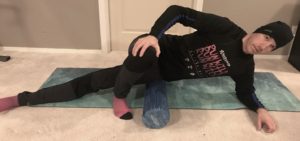
Symptom management
As with any sport, staying ahead of injury involves regular maintenance and occasional guidance. If there are aches and pains that last longer than 5 days, it will likely need professional help. Seeing a Leading Edge Physiotherapist can help identify the injury properly and promptly, to keep you training and minimizing downtime. There are a lot of techniques and services available today to assist with your injuries. From the nagging heel pain to the more severe injuries of a slip and fall, one of the keys to success is early identification and management.
All the best to you in your running endeavors this year!
